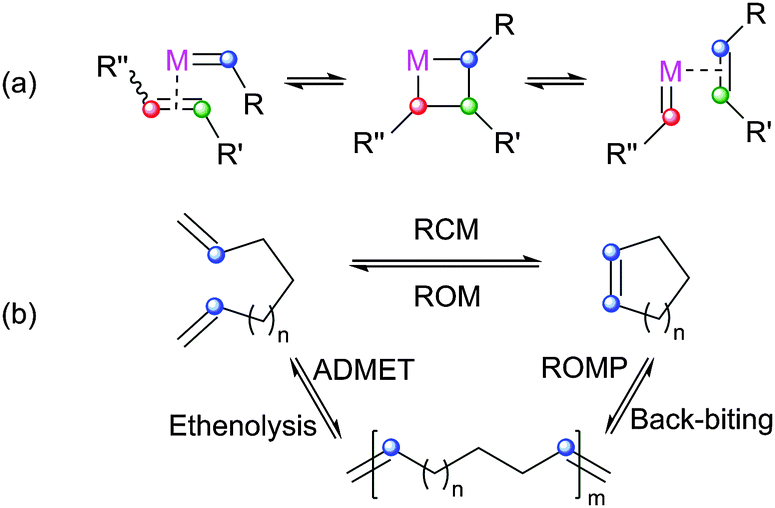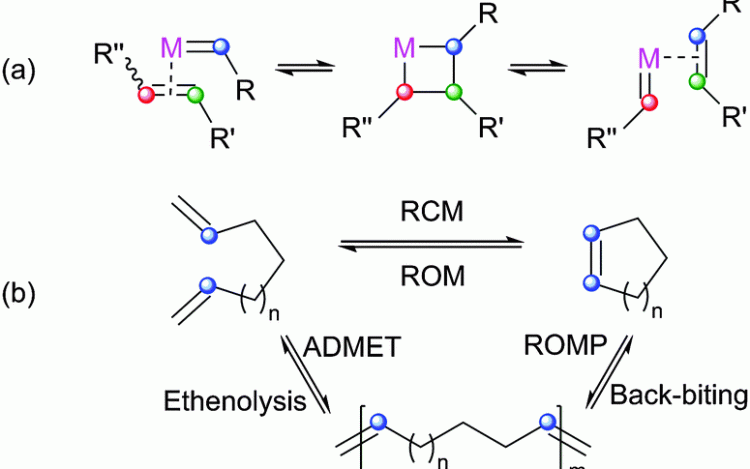One of the most exciting chemical reactions developed over the past twenty years is the process of alkene metathesis. This process has given us access to all manner of new pharmaceuticals as well as new structures of plastic that simply can’t be accessed in any other way. Endless amounts of research and research dollars have been poured into the area of alkene metathesis catalysts. Chemistry groups around the globe are busy producing ever more intricate metal catalysts in hopes that they can squeeze a tiny amount of increased performance from the metathesis reaction.
An increase of just a few percentage points in the yield of the correct compound, which is the scale of results typical in a publication detailing a new catalyst modification, is usually cause for celebration. I was therefore a little astonished to read an article in the journal Chemical Communications that outlined a change to the conditions of the metathesis reaction that resulted in an 18-fold increase in the metathesis reaction yield. I was pleased to see that I recognized the author of the paper as someone I had competed with several years ago, an extremely capable chemist from Warsaw that has been quietly building a name for himself in the area of metathesis for quite some time.

Karol Grela, from the Polish Academy of Science, details in this latest publication the simplest possible change to the reaction conditions: he changed the solvent. This is absolutely typical of the type of crucial insight that happens from time to time in chemistry. Dozens of research groups spend months tweaking the structure of the catalyst in hopes of getting just a few percentage points better performance, and then along comes someone who keeps the catalyst exactly the same but simply changes the liquid in which the reaction is performed – and sees a huge increase in the success of the reaction. Like lightning out of a clear sky, Grela suggested using a heavily fluorinated solvent called perfluorotoluene instead of the normal dichloroethane. In trials with the new solvent, his research group of chemists saw an 18-fold increase in the yield of the desired product.
It’s worth talking a little bit about how, precisely, this reaction benefits from the fluorinated solvent. It’s such a dramatic increase in reactivity that there must be something going on that previous researchers have completely overlooked, a fundamental aspect of the reaction that only manifests itself in the fluorinated solvent. Grelas publication makes a few hints, although they stress that this particular publication is only an initial “communication” and a more detailed paper is forthcoming. However, having studied Grelas past work intently and having spent 8 years of my life working daily in the area of metathesis, I think I can safely theorize about the huge success of this new method.
Alkene metathesis catalysts contain metals such as ruthenium and molybdenum, which are known to be sensitive to the presence of heteroatoms. Heteroatoms are atoms such as oxygen, nitrogen, and sulfur which contain extra pairs of electrons (not being used for bonds, just resting on the atom). These extra pairs of electrons can reach out and bind to the metal in the catalyst, shutting down its reactivity. It’s a common problem and many researchers choose to avoid any material that contains heteroatoms in order to prevent their catalyst from being deactivated.
Dichloroethane, with its two chlorine atoms, also contain unused pairs of extra electrons – six pairs, actually. While it’s not very common, these electrons (residing on the chlorine) can in theory act in a similar way to the oxygens and nitrogens, and dismantle the catalyst reactivity. Normally this effect is slight as the chlorines are electronegative and “hold onto” their electrons quite tightly. However, the electronegativity of chlorine has nothing on the electronegativity of fluorine; a fluorine atom maintains a death grip on its extra electrons. As a result, the perfluorotoleune solvent that Grela recommends switching to does away with the problem of opportunistic free lone pairs of electrons, and without this extra source of potential catalyst poisons, the reaction seems to proceed in vastly improved yield. At the same time, the reaction solvent has a permanent electric dipole which seems to be beneficial, as nonpolar solvents lacking electron pairs such as hexane do not show this dramatically increased reactivity.
This result is important because alkene metathesis is being used commercially for the production of a wide range of consumer goods. The success of the reaction is vastly enhanced by a simple change in solvent. Dichloroethane is a nasty solvent to use in the first place as chlorinated solvent waste streams are among the most expensive forms of hazardous waste, in terms of recycling costs. The perfluorotoluene can easily be recycled and reused for fresh batches, and I’m sure that many scientists are anxious to rush this technology into their commercial processes. Score another one for the Polish Academy of Science!
References:
Chemical Communications – http://www.rsc.org/Publishing/Journals/CC/article.asp?doi=b816567j
BBQ Papers – https://bbqpapers.com/
Karol Grela Publications (official website) – http://www.karolgrela.eu/pubs/
Photo – RSC Publishing – Royal Society of Chemistry




